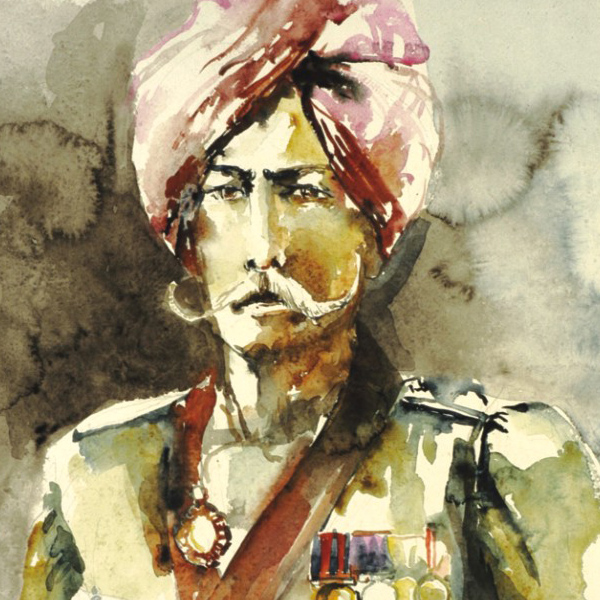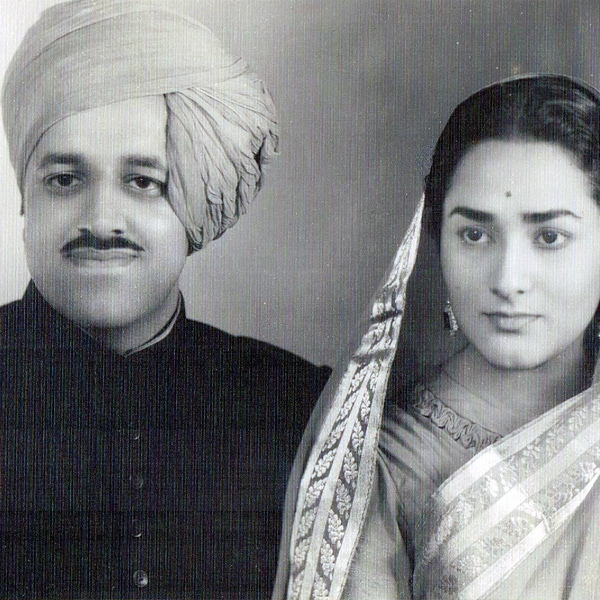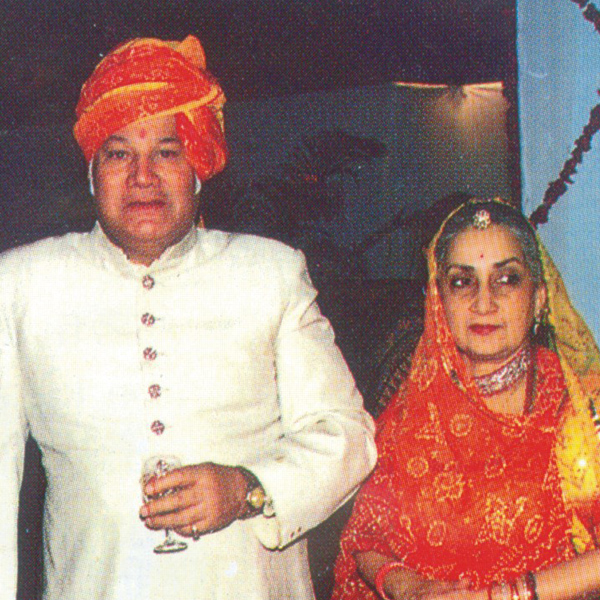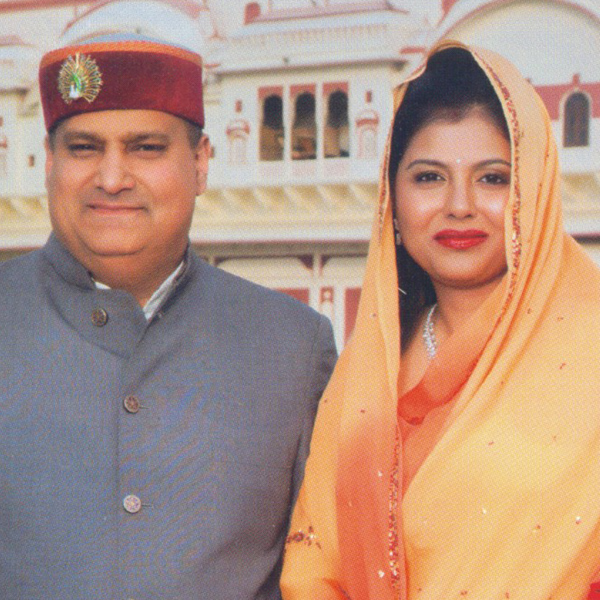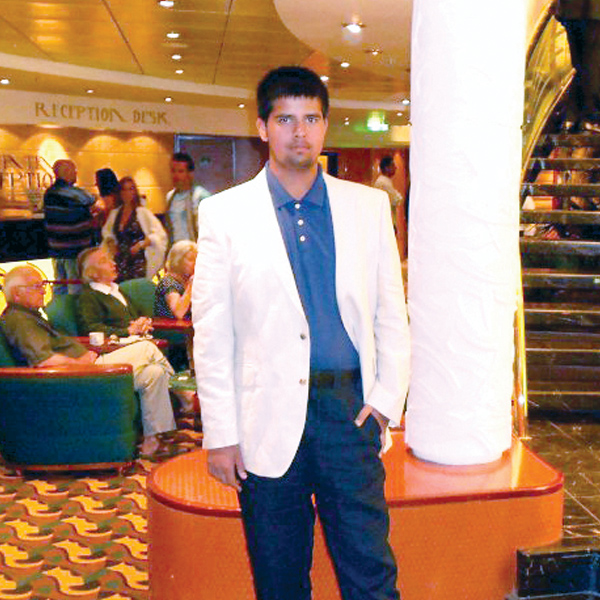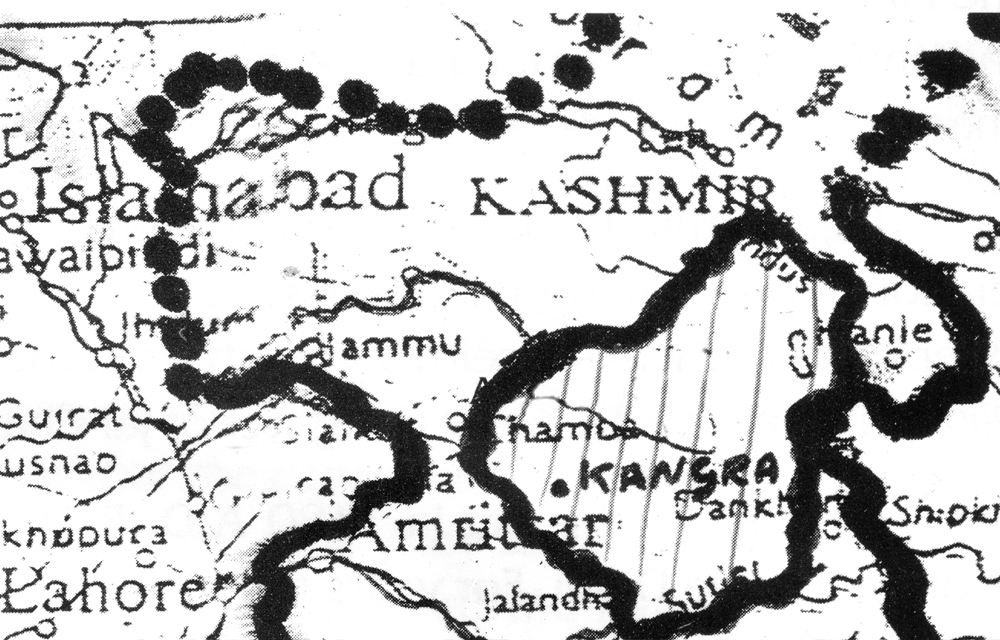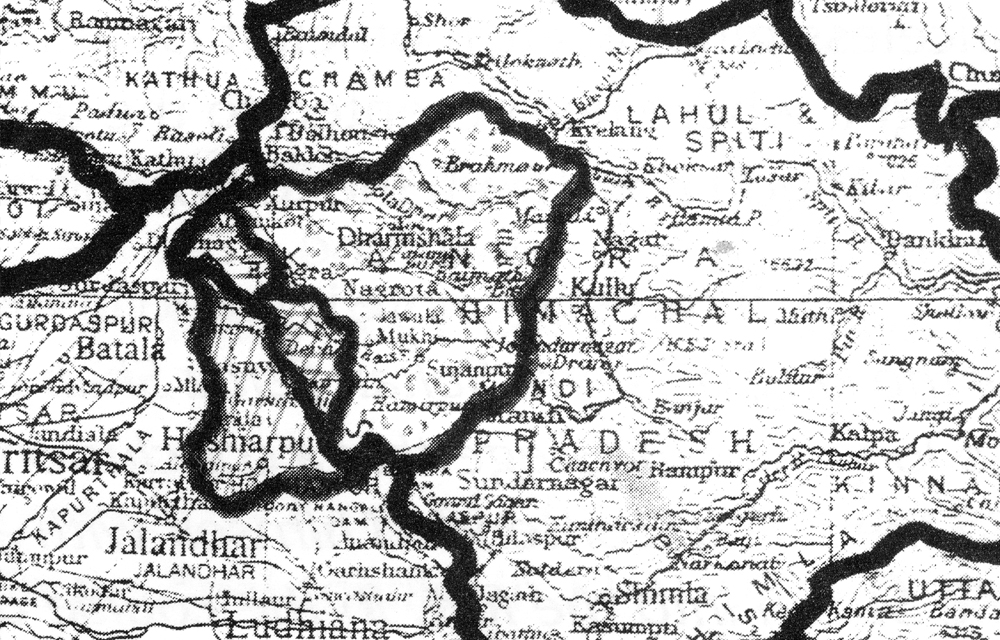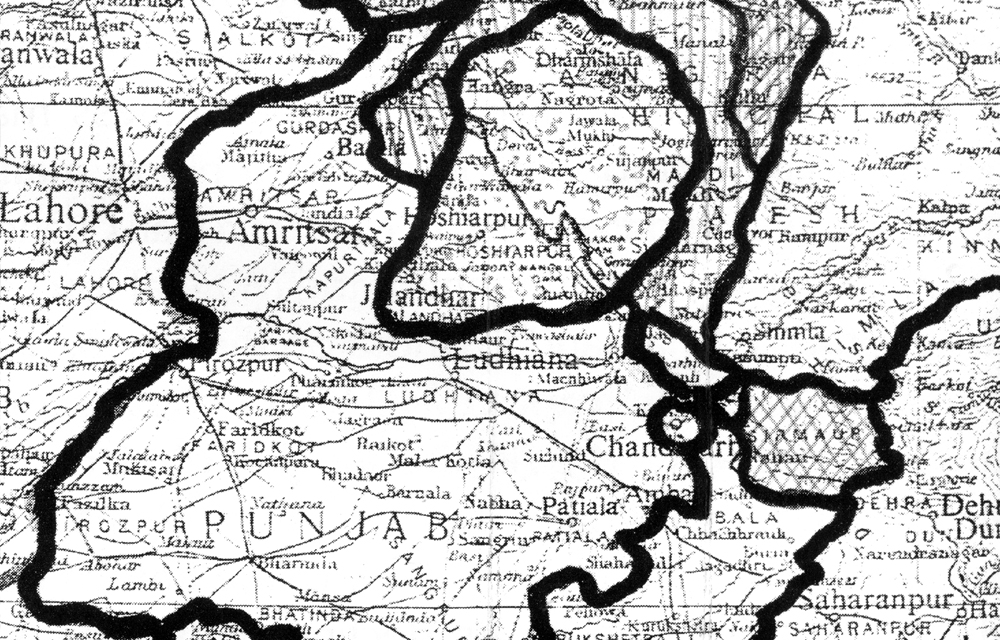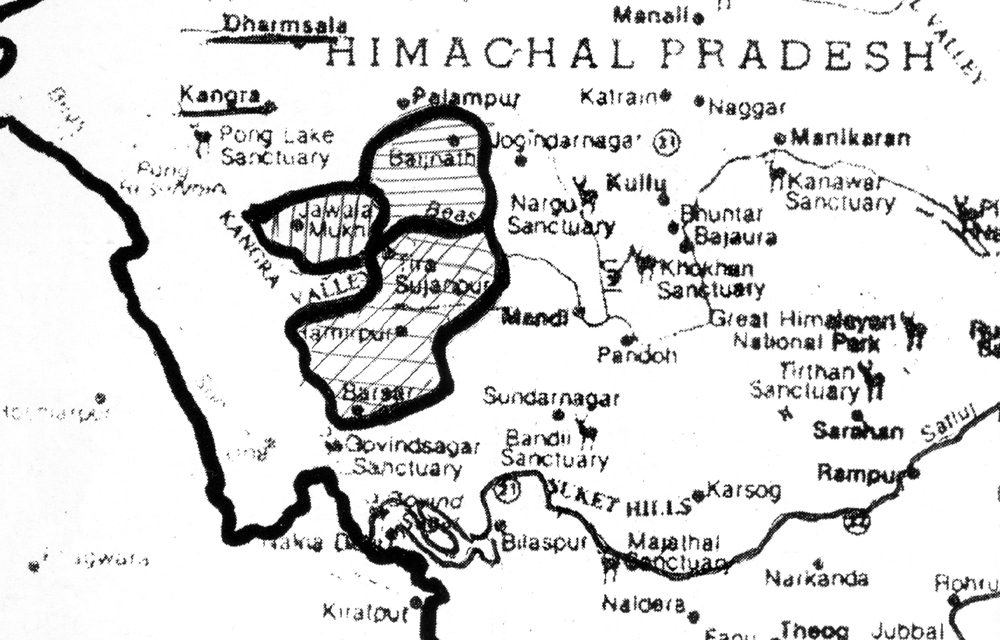
War between Alexander and Porus
According to Sir A. Cunningham the first historical reference to Jalandhar (Kangra) is founded in the works of Ptolemy - the Greek Geographer. (He accompanied Alexander on his expeditions).
Early History of India by V. Smith states that Alexander's historian had mentioned the battle fought between Alexander and the mountain king of the north of Punjab named Phageus, by the Greeks and is identified in the Katoch family tree as Parmanand Chandra - famously known as Porus in the history of India. (It is at this point we would like to inform you that the recorded history has 2 interpretations, one of the Greek, and the second of the Indian scholars, we will narrate both of them and let you interpret history in your own way).
It is said that only two kings opposed Alexander's invasion, King Hasti (defeated after a month long battle) and Porus, ruler of the doab between Jhelum and Chenab (which contained three hundred towns). Alexander advanced to the river Jhelum in 326 B.C. and met the armies of Porus on the other bank. Porus stood alone with his two sons and an army of 50,000 soldiers against the mightiest hero of the world. Porus had been betrayed by the Raja of Abhisara, Kashmir and Takshila. (They had joined the Greeks). (Prior to this Alexander had asked Porus for his submission which Porus had proudly refused).
Due to the monsoon season, the river was flooded and the ground was wet, therefore, Alexander's cavalry (main army) were unable to fight the elephants of Porus. So Alexander went 16 km up river and crossed over to the other bank, here he was met by Porus's eldest son, who fought bravely but was finally defeated and killed.
Porus marched his army towards Alexander and for 8 hours the Hindus fought bravely but were finally defeated - Porus himself a magnificent giant of 6 feet 8 inches fought till the end but at last succumbed to 9 wounds and was taken prisoner. Alexander was so pleased with the gallantry of Porus that he re-instated Porus with a larger empire (almost 85 thousand sq. miles). In September, 326 B.C. Alexander retreated from India, after appointing Porus as King of all the lands between Hydaspes and Hyphases (Sutlej & Indus, this kingdom was made up of seven different nations and had 2000 towns). It is believed that Alexander was married to one of the daughters of Porus and the son of Porus took in marriage to a cousin of Alexander (A temple made by the Greek queen still stands at the point from where Alexander retreated - Indora, Himachal Pradesh). According to some Indian Scholars - beyond the Indus lay 3 kingdoms: (i) King Ambhi ruled the region around the Jhelum, Taxila was his capital, (ii) Porus ruled over the territory bordering on the Chenab, (iii) While king Abhisar ruled around Kashmir.
King Ambhi chose to join Alexander, while King Abhisar decided to stay neutral, therefore leaving only King Porus to defend the country. Alexander was camped 16 km north of Attock. According to Plutarch, the Greek army consisted of 20000 foot soldiers and 15000 cavalry. It is stated in the Maharashtrian Onyankosh (page 531, Vol. 7) that both the armies met head-on, on the bank of river Chenab. A division of Alexander reached an island in the river but was ambushed by Porus's men (who had already taken up position on the Island). After this defeat Alexander himself crossed the river 60 km up stream from Haranpur where he was met by Porus's elder son leading the advance guard, in the battle that ensued he got killed. In the next battle Alexander right advanced guard was routed (as they had never faced elephants before) and Alexander himself got wounded and lost his horse Buceptalus. It is believed that in order to save blood shed Porus challenged Alexander to a one on one which Alexander refused.
Diodorus one of Alexander general testifies - "the huge elephants had enormous strength and proved very useful. They stamped under foot many Greek soldiers crushing their bones and coats of mails. The elephants caught the soldiers by their trunks and dashed them against the ground in great fury. The Ethiopic text observes that in the battle of Chenab a large majority of the Alexander's cavalry was killed. Alexander now realized that a continued battle would completely destroy him, therefore he asked Porus to stop fighting. True to the Indian tradition Porus set free the captured Macedonian soldiers and signed a treaty with Alexander.
Mr. Badge further adds - Alexander plight was that his soldiers were grief stricken by the loss of thousands of their comrades. They threw weapons and asked for peace. While asking for peace Alexander said to Porus "Please Pardon me, I have realized your bravery and strength, now I cannot bear these agonies."
In spite of clear evidence borne out of subsequent developments - world scholars have not taken the interest to study these facts further. How are we to believe that:
On a mere brave answer by Porus Alexander spared his life, returned his entire kingdom and also added to his territories. The real fact is that Porus had defeated Alexander, which is further proven by the fact that - Taxila (owned by Alexander allai) was handed over to Porus & the king Abhisar refused to meet Alexander (had Alexander won the battle Abhisar would have rushed to Alexander to make peace).
Now on his retreat from his misadventures in India, Alexander a much sober man, broken in spirit and his mighty army badly battered was given safe passage through Porus's kingdom. Porus did not allow Alexander to retreat by the route he had taken to come into India (Via Afghanistan where he had left some of his armies). By this farsightedness Porus stopped Alexander from re-grouping his army.
Alexander retreated by crossing on the River Ravi (between the Ravi and the Beas) Alexander's forces had to fight many tribal chiefs by the time they reached the river Beas, Alexander's army refused to fight any more battles.
From the Beas Alexander retreated via Sindh and Makran to the Indus where Alexander was again defeated by the combined tribal forces of Mallis, Musicans, Oxicans, and Sambus - it was here that he was nearly hacked to pieces and received a severe blow to his head (his body guards carried him to safety - two of them died in the process). After leaving India via Baluchisthan, Rasmalan and Pasni, he reached Carmenia. Alexander reached Babylon in 323 B.C. at the age of 33 and on 28th of June 323 B.C. Alexander died, without reaching home.
History must therefore re-assess the Porus - Alexander encounter to proclaim Porus as the undisputed hero.
After Alexander's death on June, 11, 323 B.C. Porus was appointed the ruler of the lower Indus Valley. As a king Porus was held in high esteem by the Hindus and in B.C. 320 he was murdered by the Greek General Endermus - this created an uprising and in 317 B.C. Chandragupta Maurya expelled the Greeks out of India and Afghanistan. Thus, in 312 B.C. the Maurya dynasty took control of Northern India.
Ancient Hindu Scriptures such as Hemakosa (Sanskrit Dictionary) and the 5th century Rajataranginin, the Uttara-Kanda, the Padama-Puranas and the Vishnu-Puranas mentioned in detail the life, tradition and religious practices in the region of Trigarth (Kangra). One interesting tradition being that the Raja owned all the lands he ruled and all his subjects were his tenants. This is why Kangra does not have any major Jagirdars (like those found in the rest of erstwhile princely India).
The period between 326 B.C. to about the 5th century is fairly blank but we do know for a fact that the Katoch dynasty played an important role in the struggle of power between Chandragupta Maurya and the Greek Generals who were left behind to guard Alexander's frontier Empire (tribal called the Gaddis, a nomadic tribe of the Himalayas are the descendants of the Greeks).
In the early days of Ashoka the Great, the Katoch Kings had tested their swords against this great ruler. They had suffered disastrous consequences of this battle as they were only allowed to govern their lands under a treaty and lost the lands of Multan. By the end of the 5th century, the Katoch Kings had re-established their independence. In the first half of the 1st century A.D. Raja Ram Dev of Kannouj came conquering into Kangra. He was able to plunder the country and its towns, but was not able to take the fort - the FERISHTA in its introductory chapter narrates that - "at length he arrived at the Shakti Pindi (Brijeshwari Temple) where on account of his veneration for the idol of Durga (situated at a small distance on top of a neighboring hills - Nagarkot) he halted and summoned the Raja of Kangra to appear before him. The Raja by no means would consent, but agreed to meet Ram Dev at the temple. Thus, the two princes met at the temple & the Raja of Kangra gave his daughter in marriage to Ram Dev's son. After this, Ram Dev left the region of Kangra and attacked the fort of Jammu.
In C. 470 A.D. the Katoch dynasty successfully defended their empire against Shreshta Sen of Kashmir, but 50 years later his son Pravara Sen-II, defeated the Katoch and annexed the partitions of Chamba.
In the second quarter of the 7th century, the Chinese traveler Huien Tsang passed through Jalandhar which he described as 1000 Li (167 miles) long East to West and 800 Li (133 miles) broad North to South. It seems that in this period the Katoch dynasty had lost their empire in Multan and was left with a kingdom of about 25,000 sq. miles. If these measurements are correct, then the present day towns of Chamba, Mandi, Suket (all independent kingdoms during the British Raj) and Satadru (Shimla hill states) must have formed the outer limits of the Kangra States. Huien Tsang on his return from the court of Raja Harshvardhan of Kannauj is said to have revisited the Raja of Jalandhar (A.D. 643) who is identified as Rajanaka Adima Chandra from the Vanshvali.
In A.D. 883-903, Raja Shankara Verman advanced towards Gujarat with an army of 9 lacs foot soldiers, 300 elephants, and one lac horsemen. Rajanaka Prithvi Chandra of Kangra a contemporary of Shankara Verman, was against the idea of the conquest of Gujarat - how this situations was resolved is not mentioned in the Raj Taringani.
In the 9th century, the Katoch King Jai Chandra built two main temples, one at Baijnath (the fist Jotir-linga, Shiv temple in India), the second at Masroor (rock cut temples copied from the caves of Ajanta and Ellora, coins minted by Raja Jai Chandra can be seen in the museum at Chamba).
In the year 1009 A.D. Mahmud of Ghazni invaded Punjab and laid siege on Nagarkot (town of Kangra). He was probably attracted by the prestige of the fort which was famous all over India and still more by the fabulous wealth which was believed to be stored within its walls.
The details of this siege are recorded in the TARIKHI-I-YAMINI by Utibi (Utibi accompanied the Sultan on his expedition of Hindustan). "The Sultan himself (after his victory of Indus) went to the fort called Bhim (Kangra Fort), which is very strong and situated on the promontory of a lofty hill, in the midst of impassible water. The kings of Hind, the chief of Kangra and all the rich devotees of the Brijeshwari Temple send their treasures and precious jewels time after time to be presented to the large idol within the temple, so that they may receive a reward for their good deeds. The accumulation of years had attained such an amount that the backs of camels would not carry it, nor vessels contain it, nor writers hand record it and nor the imagination of an arithmeticians conceive it". Ferishta records that - "That in this fort is supposed to have been a greater quantity of gold, silver, precious stones and pearls, then was ever collected n the Royal treasury of any Prince on earth."
It is interesting to note that Mahmud was the first enemy to ever step foot in the fort. His attack was so swift that the garrison, commanding the fort and the town could not even close the gates of the city wall, (The Katoch armies had been greatly reduced in numbers, because the Raja of Kangra Jagdish Chandra was out on an expedition against the Raja of Kaluta - present day Kullu). After gaining access into the town the Sultan blackmailed the garrison commander within the fort (with the lives of the town citizens). Under these circumstances, the fort was handed over to the Sultan, who after taking control of the fort killed all its occupants. Abu Nasir Ahmed bin Mohammad Farighuni the ruler of Juzjan, Altuntash and Asightigin (Sultans chief chamberlains) - were appointed in-charge of the gold and silver. The Sultan himself took charge of the jewels, (the Kangra fort is said to have 21 treasure wells - each well measures 4 meters deep and about 2 and a half meters in circumference-the Sultan of Ghazni looted 8 wells - the British in the 1890s found 5 more wells. Local beliefs are that the fort still hides within its wall 8 more treasure wells).
Related Topics
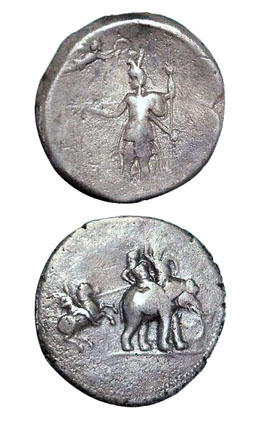
Coins of Alexander
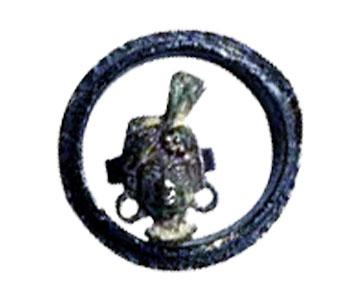
Ring of Raja Porus
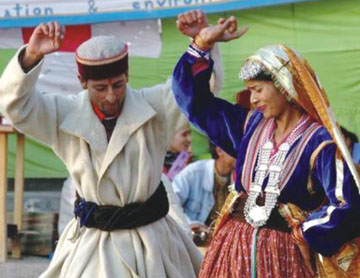
Gaddi Tribal
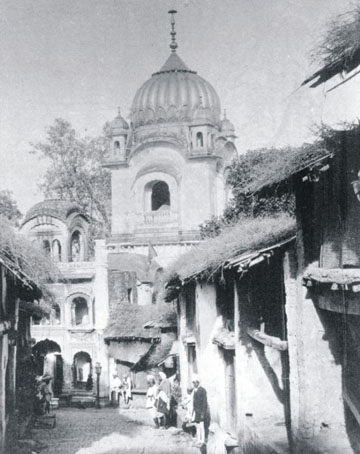
Brijeshwari Temple (Before 1905)
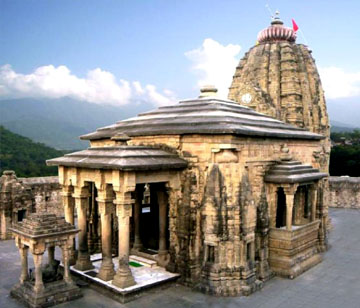
Baijnath Temple, Kangra
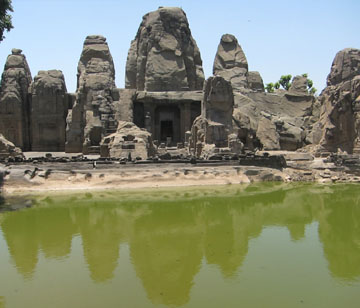
Masroor Temple, Kangra
Family
Kangra - in Map
C. 4300 B.C.:
Kingdom at the time of Rajanaka Bhumi Chandra Katoch. (Area 1,25,000 sq miles - larger than U.K., Italy, Norway Rajasthan)
C. 326 B.C.:
Kingdom at the time of Porus (Area 86000 sq miles - larger than Greece, Nepal, Portugal, Gujarat)
C. 630 A.D.:
Kingdom at the time of Hieun Tsang (Area 23000 sq miles - larger than Srilanka, Ireland, Himachal Pradesh)
15th Century:
After the division of the off-shoots. (Area 9300 sq miles - larger than Kuwait, Beijing)
1815:
Three independent Katoch states of Maha Moria, Rajgir - Lambagraon, Nadaun - combined area 3000 sq miles larger than Brunie, Sikkim.

